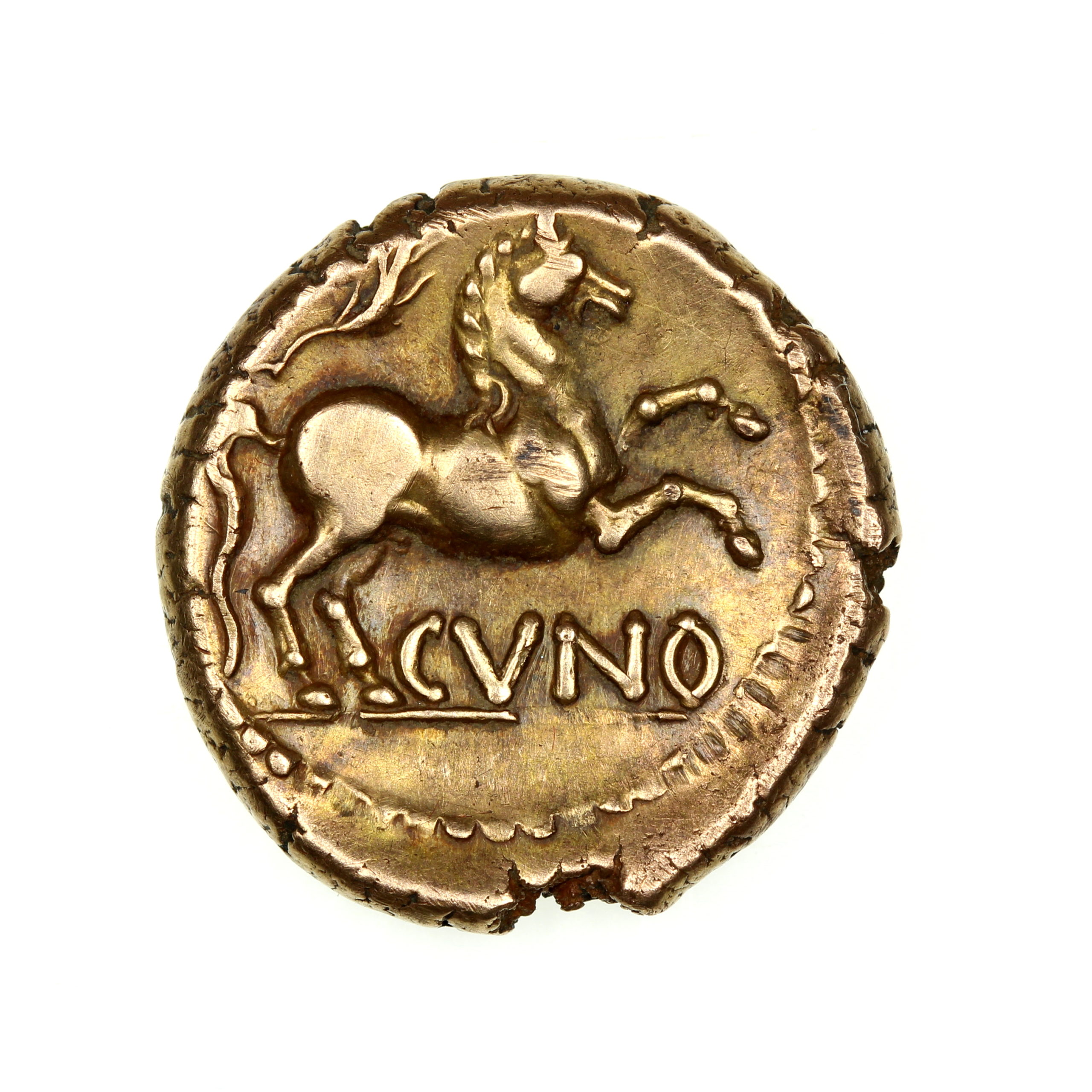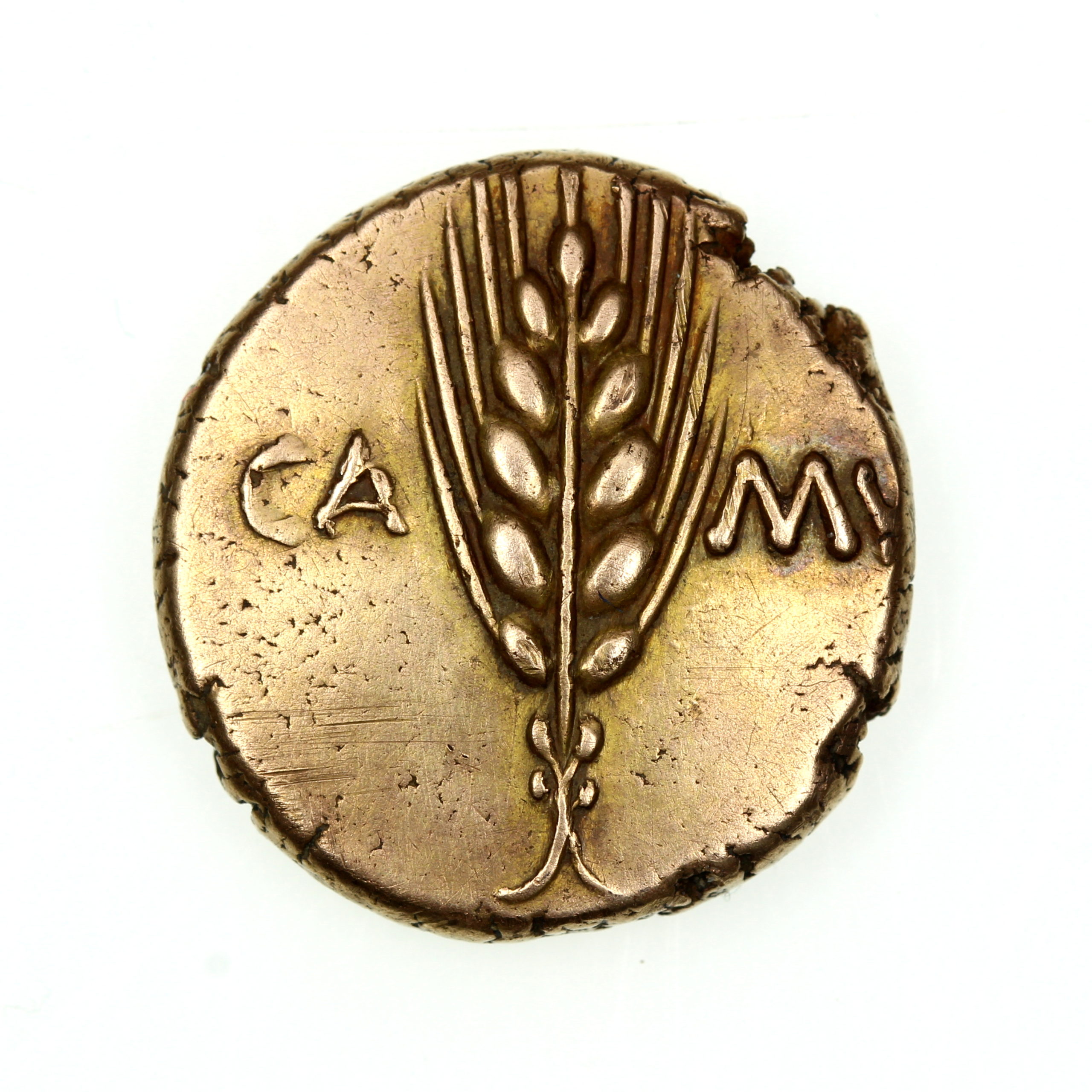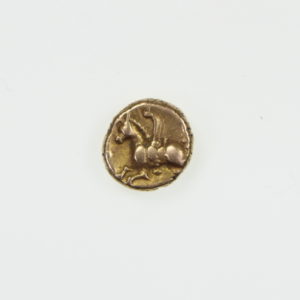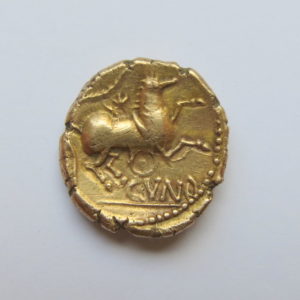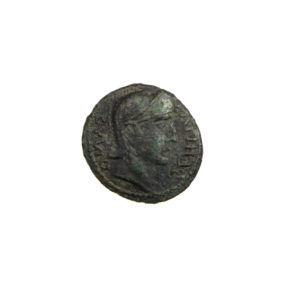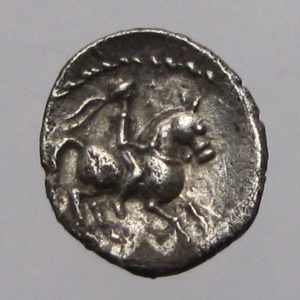Catuvellauni & Trinovantes Cunobelinus AD 8-41 Gold Stater Classic type
£4,950.00
Catuvellauni & Trinovantes Cunobelinus 8-41AD Gold Stater, Classic type.
CA MV either side of corn ear / classic style horse right with CVNO below and branch above.
ABC2795 S288. Scarce
16mm; 5.38g
A most pleasing example of this alluring type, probably the single most recognisable coin of the British Iron Age and very desirable as such. Of fine classical style and in very good condition. Lovely coppery pink gold which was probably mined in the hills of Wales.
To Shakespeare, he was Cymbeline. For a monk called Nennius writing in the early 9th century, he was Bellinus. In Medieval Welsh oral traditions, he is Beli Mawr or Cynfelin. For the modern historian, numismatist or student of Late Iron Age Britain, he is best known as Cunobelin. Whatever he is called, he represents a very real figure whose amorphous, semi-legendary status has shifted back and forth across the line dividing myth and reality over the course of two millennia.
From the moment of his naming, Cunobelin (‘hound of Belenus’ or ‘bright one’) was obviously expected to accomplish great deeds. His birth-date is unknown, but we are certain that he was the son of Tasciovanos – an early ruler of the Catuvellauni. Coin evidence is key in establishing this familial relationship, as many coins struck for Cunobelin are prominently inscribed ‘CVNOBELINI TASCIOVANI F[ILIVS]’ (Cunobelin, Son of Tasciovanus) (Fig.3). He is thought to have ruled between circa AD 8 and AD 41, the use of Latin text on his coins demonstrating growing Roman influence even though Britain was not yet a Roman province.
Tasciovanos himself belonged to a Late Iron Age tribal grouping called the Catavellaunii. This loose confederation of peoples lived in and around what are now the counties of Bedfordshire and Hertfordshire. Their Oppidum was probably Verlamion, a heavily fortified site with impressive earthworks that survive to this day, sited some two kilometres away from the modern city of St Albans. The infamous instigator of resistance against Julius Caesar, Cassivellaunos, who himself was possibly also a relative of Tasciovanos, may have been one of their earlier rulers.
Like many of the other peoples that inhabited Britain in the Late Iron Age, Catavellaunian society was composed of craftsfolk, farmers and artisans – but also warriors. After all, their very name translates broadly from Brythonic (a group of Celtic languages) as ‘those skilful in war’. Under Tasciovanos’ leadership, it was evident that they continued to live up to this name – expanding their territory eastwards into that of a neighbouring tribal confederation called Trinovantes. Taking over most of what is today Suffolk and Essex, for a time the Catavellauni also appear to have conquered the regional centre of Camulodunon – probably displacing the Trinovantian king, Addedomaros, in the process.
Out of stock

